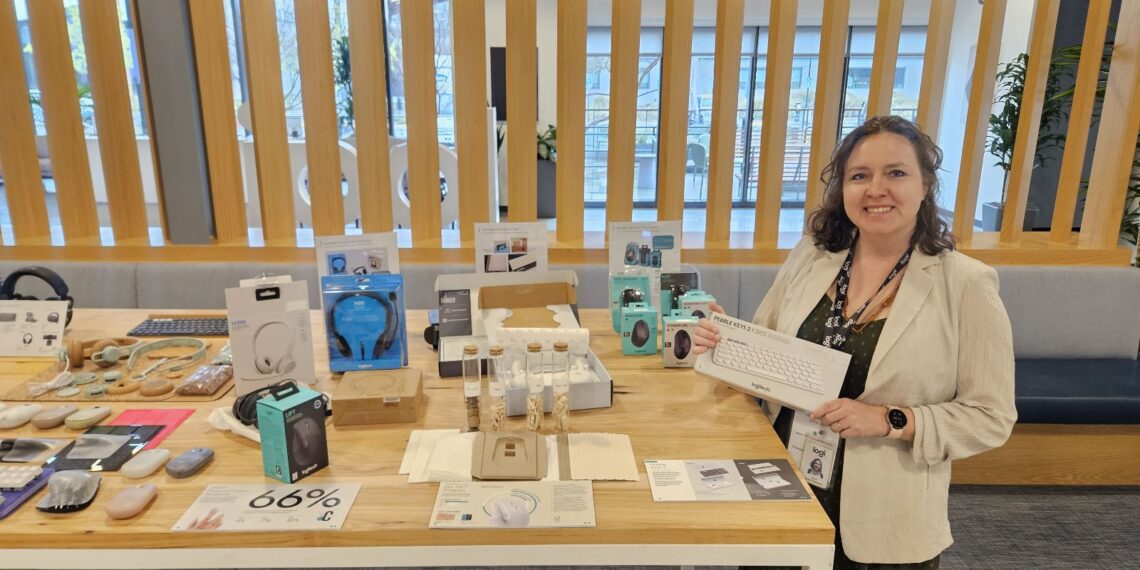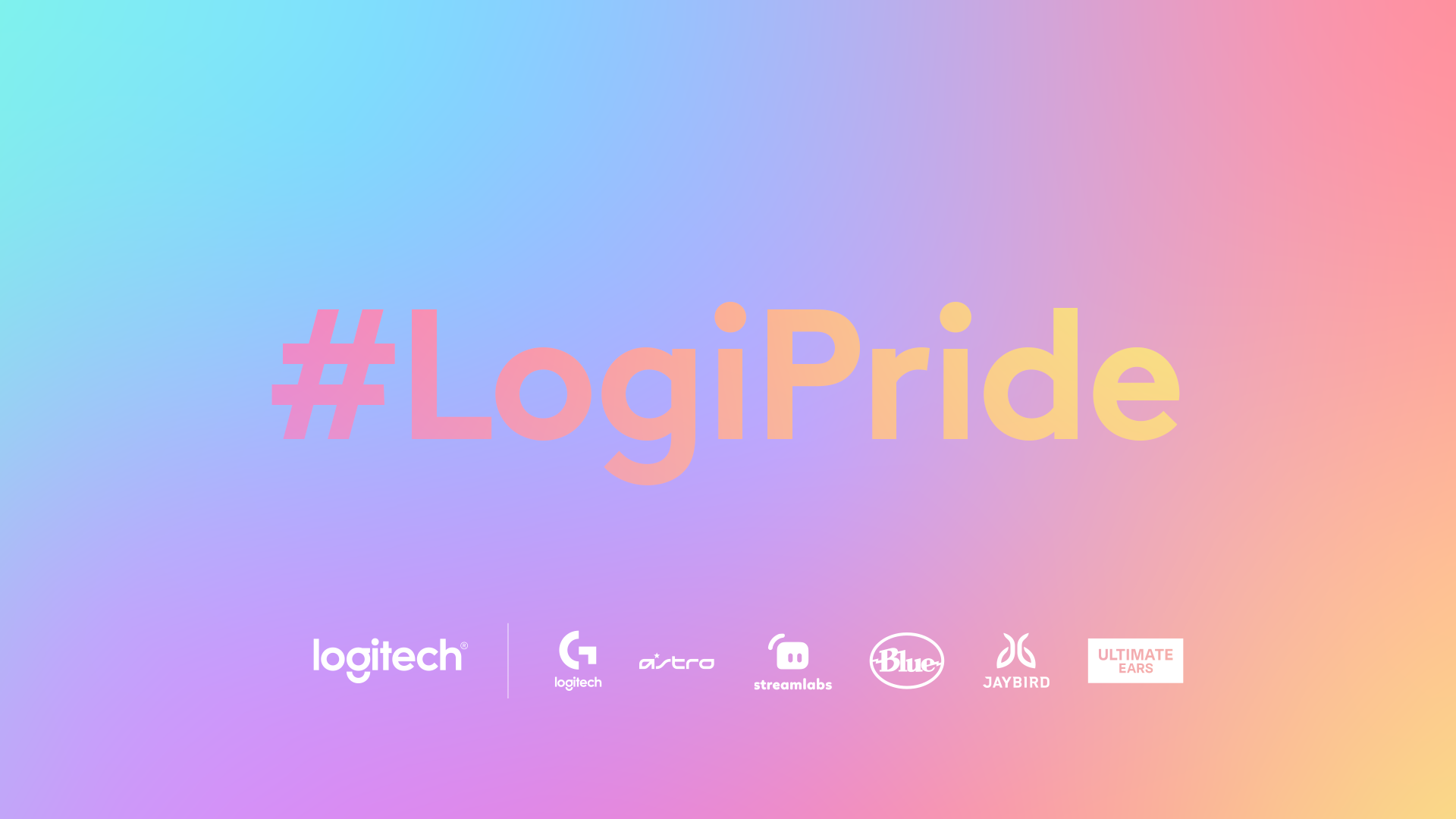Contrary to popular belief, packaging isn’t all just paper and plastic.
There’s an entire world of R&D hidden behind the little cardboard boxes at your local Best Buy and the ones that Amazon leaves at your front door.
Bliss Buter-Thompson, Head of Packaging at Logitech, and her team design, develop, and test every single one.
The Journey to Logitech
After earning a degree in illustration from the Massachusetts College of Art and Design and working a variety of packaging roles at smaller companies, today, Bliss is Logitech’s Head of Packaging.
The company’s Silicon Valley Headquarters is a world away from her hometown Marshfield, Massachusetts, but the artistic sensibilities and problem-solving attitude Buter-Thompson developed during her youth are as impactful as ever.
“Some of the first packages I had out on the shelves were the most memorable to me; being able to get them approved by clients, go into production, and see them on store shelves is always very cool,” Bliss reminisces. “My favorites, though, are the ones where we’re solving a complex issue—like sustainable design or durability in packaging design.”
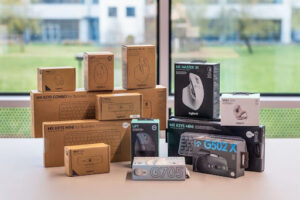
Buter-Thompson began her career with the company as a Lead Structural Designer, working alongside engineers on the structural design of the Logitech packaging in California and Taiwan.
She continued her progression as a manager leading the company’s Silicon Valley packaging design team, eventually stepping into her current role as Head of Packaging. Her latest evolution came within the past several years, when Logitech—and the packaging industry at large—began to place a much greater emphasis on driving sustainable packaging design..
BEYOND THE BOX
“With packaging, our primary focus is to protect the product, but we also need to provide the ideal customer experience,” Buter-Thompson explains. “We’re the first touchpoint our users have with the brand and the product—and there are so many things, from graphics to structure, that we need to make sure we’re accounting for.”
“On the shelf, we need to differentiate ourselves; inside of the package, we need to make sure products safely get to where they need to be without any damage,” she adds.
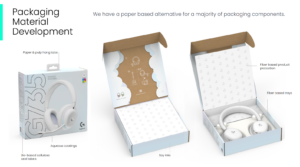
Lately, much of the team’s efforts have been in increasing recyclable and renewable materials in packaging, encouraging clear communication of materials used, sharing sustainability findings externally, and generally minimizing environmental impact.
THE PUSH TOWARDS ELIMINATING SINGLE USE PLASTIC
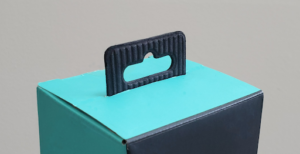
“Over the past five years, we’ve really focused on the idea of reducing the use of single-use plastic,” says Wesley Wang, Senior Manager of Asia Packaging Design. “It’s a really hot topic in the packaging industry, and it’s something we are constantly building towards.”
At Logitech, plastic hang tags designed to allow boxes to reside on retail shelves have been replaced by paper ones; plastic seals have also given way to paper labels; polypropylene laminate, a popular thermoplastic that receives widespread use in the shipping and packaging industry, has been replaced by a more sustainable and water-based aqueous coating, a decision which has saved Logitech countless square meters of plastic lamination in one year.
Furthermore, Logitech uses responsibly-sourced, FSC™-certified paper packaging in 19% of its products, with 73% of new product launches utilizing this paper alternative to single-use plastic packaging. For more information on this topic, please explore Logitech’s 2024 Sustainability Impact Report.
Simply put, the company’s single-use plastic initiative can be boiled down to either removing plastic packaging elements entirely or, when necessary, replacing them with paper. This comes at a time when the global shipping and manufacturing industry produces hundreds of metric tons of plastic per year—and environmental stewardship is more important than ever.
In practice, though, removing plastic from packaging can be complex—and has required incredible levels of innovation by several Logitech packaging experts.
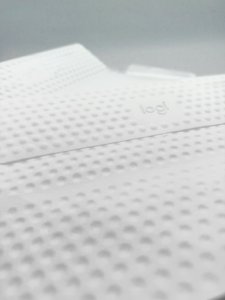
To address these issues, new material innovations are developed within Logitech’s packaging department.
In order to prevent dusting, scuffing, scratching, or other damage that may occur during shipping or on shelves, the company has developed a pulp paper alternative to thin plastic bags that serves the same protective function but offers additional benefits. This material, obtained by chemically or mechanically separating fibers from recycled wood, paper, and other elements, supports post-processing techniques such as debossing and printing company logos and patterns. It can even be transformed into bubble paper for cushioning, reducing the number of components needed and enhancing the user experience. Additionally, end consumers can retain and reuse it.
“When you first see and touch it, it feels just like cotton fabric—soft, comfortable, and textured. But it’s actually made of wooden fibers,” Wang says proudly during an interview as he holds up his team’s latest exploration. “100% physically recyclable and repulpable where recycling facilities are located!”
Another use for the pulp material is in molded hangtabs. More rigid than paper hangtabs, molded pulp hangtabs are patented by Logitech and serve to replace the plastic hang tabs used in retail displays. While the molded pulp tags are Logitech’s intellectual property, the company has shared much of its guidelines, work, and research—including the hangtabs themselves—with external stakeholders for use throughout the shipping and manufacturing industry.
This has cemented Logitech as a leader in packaging and helped spread important sustainability knowledge throughout the industry.
“We’ve given companies access to our pulp hangtabs and paper technology, which has positively affected sustainable packaging design even outside of Logitech,” explains Wang.
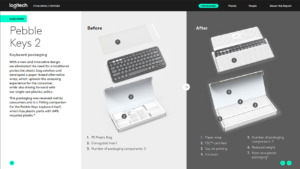
Just this week, the company made even further strides by eliminating single-use plastic and plastic clamshell packaging from its affordably-priced, hallmark mice categories. With the transition now nearly complete, the magnitude of this initiative is estimated to remove 660 tons of plastic and reduce 6,000 tons of carbon dioxide from the air, equivalent to eliminating over 37 million single-use plastic water bottles annually. The global transition to paper packaging across tens of millions of products continues across various retailers, with expected completion dates by the end of 2025.
“In addition to packaging, my role right now is looking to amplify sustainable solutions within the design organization,” Buter-Thompson explains. “I’m leading a task force along with some other folks around the company, and we’re working directly with the sustainability and engineering teams to create some very exciting collaborative projects.”
A Leader for a Sustainable Future

The inland portion of Marshfield is less a town and more a series of small communities stitched together by road and river. Here, vast wooded areas isolate smaller groups of buildings—the Whiton Woods, Feinberg Bogs, and Sprague Forest dominate the landscape with thick canopies of Red Maple and White Pine.
Somewhere, nestled in the trees and far from the commercial bustle of Marshfield’s coastal tourist community, is Bliss’s childhood home.
“I didn’t really have a neighborhood, so I had no choice but to love nature!” Bliss says today. “I would sit outside and draw the trees since I lived in central Marshfield, where it’s mostly forested.”
A quiet respect for the earth developed during this time, which—along with her years of experience in sustainable packaging—quickly developed into a passion that she puts into her work every day at Logitech.
“I’m not a packaging designer, industrial designer, illustrator, or painter,” Bliss says, before adding jokingly, “I’m a jack of all trades that’s not necessarily an expert at a single skill, but I know enough to be dangerous—or naive!”
Over time, though, she’s developed an expansive expertise over several key aspects of the packaging industry and is now bringing that knowledge together, leading Logitech towards a much more sustainable future in the process.
“Sustainability has always been important to me, and now that I’m working in it, it’s been really fulfilling to be providing knowledge and expertise to help make a real impact,“ she says. “It truly has a role in every function, in every part of how you design, and I believe packaging is the entryway to that—the Trojan horse.”
2. “Visual Feature | Beat Plastic Pollution,” March 1, 2022, https://www.unep.org/interactives/beat-plastic-pollution/.

